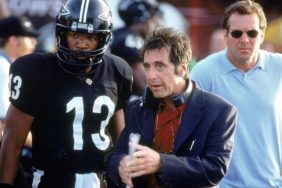
Hawaii can be quite the picturesque scene. With white sandy beaches, cooled molten rock and calming waterfalls, it’s no wonder Hawaii is among the top vacation destinations in the United States.
But in October, nearly 2,000 of the world’s most fit athletes will head to the 50th state, not to soak in all of its beauty, but rather, to compete in one of the most grueling competitions out there – the IRONMAN World Championships.
The triathlon, which requires athletes to swim 2.4 miles, bike 112 miles and run 26.2 miles, takes place in Kona, mainly along the coast. And it’s certainly not easy, given the crosswinds upwards of 45 mph, along with the scorching sun and a temperature well over 90 degrees.
For the average person, this sounds almost like a form of torture – we personally cannot fathom doing two other disciplines on top of a traditional marathon. However, athletes like Timothy O’Donnell live for the IRONMAN Competition, participating in events across the globe.
O’Donnell discovered triathlons, thanks to his older brother Thomas, while swimming varsity for the U.S. Naval Academy, where he later led the Naval Academy Men’s Team to Two U.S. National Triathlon titles. After graduation, he began racing professionally. Now, the 33-year-old and last year’s second place finisher at the 2013 IRONMAN World Championship, hopes to become the first American to win in Kona since 2002 – and he shared with us what it takes to become a successful IRONMAN competitor.
Equipment
An athlete is only as good as their equipment, so it’s essential that these participants not only use some of the best gear available, but also make certain they’re comfortable with their supplies. For O’Donnell, there’s only one name when it comes to his swimming gear – Aqua Sphere. Vision is perhaps most important when in the water, so O’Donnell uses a goggle that offers not only significant comfort, but easy adjustability for when he’s on the move.
“I’m fortunate to work with sponsors like Aqua Sphere that provide me with the best swim equipment and gear,” he explained. “Aqua Sphere K180+ is my go-to goggle, because it offers a 180-degree view, which comes in handy when you’re out in the water with hundreds of other swimmers.”
The other important equipment in the water is the wet suit. Athletes want a suit that isn’t going to weigh them down, or cause them any friction or discomfort. That’s not always easy to find.
“I like to compete in a [wet]suit that will help save me time and energy by reducing drag, so I race in Aqua Sphere’s Energize Compression Speedsuit. The speedsuit also compresses the core muscles to damp vibration which lessens muscle fatigue, leaving me fresher for the bike and run.”
Once out of the water, it’s time to hop onto his bike. O’Donnell rides a Trek Project One Speed 9.9, an aerodynamic bicycle that has a reduced weight, allowing the rider easy maneuvering, no matter what the course. According to O’Donnell, the Trek Project One Speed 9.9 is “the fastest bike out there.”
When it comes to the running discipline, a great pair of shoes is really all it takes. O’Donnell uses the Newton Distance Elite during competition and the Newton Distance when putting on the miles during training. Both pairs allow for some serious mileage and can withstand the toughest terrain.
Training
In order to prepare his body for each of the three disciplines, O’Donnell simply trains in each. As he prepares for Kona, the triathlon star puts in 40-hour training weeks.
“I’ll make sure to do hard swim sessions and bike closely after finishing, so my legs know what it feels like to bike after swimming,” he said. “I also run off the bike several times a week to drill into my muscles the feeling of running on tired legs.”
Some weeks, during training, O’Donnell put his body to the test. Leading up to Kona last year, he was logging more than 375 miles of riding, more than 75 miles of running and five swim sessions in a week, mostly training alone, since there’s no one with him during the race.
Nutrition
O’Donnell’s eating habits are slightly different than that of most athletes. Recently, he’s had to change his diet, due to gluten sensitivity, causing him to find new ways to ensure he gets the proper nutrition and energy needed to compete at top performance, without any side effects. However, there has been little change as to how he goes about meal preparation for a competition.
“Your race-day nutrition really starts 48-hours before the start of the race,” O’Donnell admitted. “I usually eliminate roughage two days out and increase my carbohydrate intake.”
Eating well leading up to the race is an important factor. Once an athlete has eliminated anything out of the ordinary, it’s time to get energy that can provide endurance during the long competition. O’Donnell starts the race day off with a simple breakfast, consisting of a bowl of gluten free oats with a vanilla CLIF shot and a Justin’s nut butter packet mixed into it. He washes it down with a cup of Joe and four to six salt sticks, to help him load up on sodium before the events. O’Donnell tries to make certain he has 1.5 to 2 grams of carbohydrates per kilogram of body weight during breakfast. After his properly planned breakfast, his pre-race meal is that of many other athletes – grilled chicken and white rice.

Endurance
After all, it is called the IRONMAN Triathlon – so endurance is key. These athletes’ bodies take a beating day-in and day-out, whether it’s because of training, or the actual competition. Over time, their body can wear down if these athletes are not careful – but sometimes it’s the mental toll that’s worse.
“IRONMAN training is intense and long, so it can definitely wear down the body,” said O’Donnell. “I often find my brain doesn’t work well in the big training blocks! I’ll hop on my computer to get some work done and end up just looking at the screen, unable to process what needs to be done. Not only are we taxing our bodies, but we are extremely focused and that has a huge mental toll.”
That’s not to say he doesn’t take measures to ensure his body is at top performance. O’Donnell trains four times a day but he understands how crucial it is to allow his body to rest. That’s why he schedules several massage sessions a week, along with spending a few hours a week using a Compex foam roller and massage stick for self-maintenance recovery.
“To let your body rest is crucial. I take three to five days off training late in the season, usually around early-May and late-July, to step away from the sport to clear my head and let my body heal late in the season. By taking breaks, I’ve seen many successes late in the year, specifically at Kona.”
Challenges
The biggest challenge when it comes to a triathlon is energy. While an athlete is pushing himself mentally, physically and emotionally, it’s important not to use it all up in one discipline.
“Not only do you have to master the three disciplines, you have to figure out how to properly ration your energy over an eight hour race day,” the Aqua Sphere sponsored athlete said.
Time management is another challenge. Because, let’s face it, most of us don’t have 35 to 40 hours a week that we can devote to training. The fact that the IRONMAN Triathlon is three disciplines only adds to the level of training. To master one can be simple, to master all three – not so much.
Advice
“Prioritize your key training sessions,” O’Donnell shared. “Make sure you’re fresh and ready to do those well. The rest will come with hard work and dedication. Each race is a test of physical, mental and spiritual toughness and at the end of the day, challenging yourself is what it’s all about.”
Ed Miller is a contributor for CraveOnline Sports. You can follow him on Twitter @PhillyEdMiller or “like” CraveOnline Sports on Facebook.
Photos courtesy of Aqua Sphere








